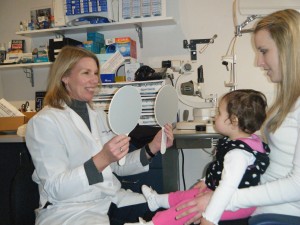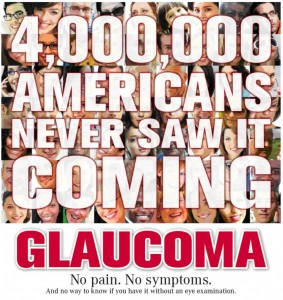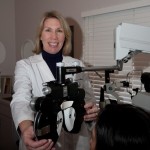Age-Related Macula Degeneration (ARMD) is a progressive disease that damages the area of the eye that is responsible for color, clarity and visual details, the macula. If the integrity of the macula is compromised by blood, fluid, or tissue changes the result is blurry and distorted vision. Vision loss can occur suddenly or slowly.
Causes of Macula Degeneration
There are causes of ARMD that are beyond our control and there are causes that we can control.
The Uncontrollable Factors: Age, Family History, Skin and Eye Pigment
The Controllable Factors: Smoking, Diet, Ultraviolet Exposure, Exercise
Of the factors within our control, I’m going to address what we eat.
In 2006, the researchers at the National Eye Institute began a study to see if they could improve on the 2001 Age Related Eye Disease Study (AREDS). A list of FAQ is available here . The results of the studies show that taking a supplement with high levels of specific antioxidants and zinc can reduce the risk of progression in people with moderate to advanced macula degeneration. The level of vitamins and minerals in the AREDS2 formula is difficult to achieve from diet and standard multivitamins alone so a dietary supplement is available.
After your eye examination, I may recommend taking a AREDS2 supplement. This supplement is easily found with the other vitamins and supplements in the pharmacy and super market.
I also recommend trying to eat more foods that contain the nutrients in the AREDS2 formula: Vitamin C (500mg), Vitamin E (400IU), Zinc (80 mg), Copper (2mg), Lutein (10mg) and Zeaxanthin (2mg).
 Lutein and Zeaxanthin can be obtained in green leafy vegetables and other foods such as eggs.
Lutein and Zeaxanthin can be obtained in green leafy vegetables and other foods such as eggs.
Most of us are familiar with Vitamin C, it is in fruits and vegetables, including oranges, grapefruit, strawberries, green peppers and tomatoes.
Vitamin E is fat soluble and found in nuts, sweet potatoes and fortified cereals.
Essential Fatty Acids (EFA) are in fatty fish like tuna, salmon, whole grain foods, chicken and eggs.
Zinc is obtained in extra lean red meat, poultry, liver, shellfish, dairy, whole grains and legumes.
This might sound a bit like the Mediterranean diet. There is ongoing research to see if a heart-healthy diet of plant-based foods, oils, fish, lean meats and whole grains can reduce the development of ARMD. Stay tuned.







 Children who do not have the necessary visual-motor and visual-perceptual skills to compete in the class room with their classmates, may act out, be easily distracted or not be able to pay enough attention to perform to their potential. A 15 year long study at the San Bernardino Juvenile Hall revealed that a much higher percentage of juvenile delinquents have vision problems than in the average population. According to the study by optometrists Stan Kaseno and Kristy Remick, poor visual skills can contribute to poor self-esteem, which can lead to poor attitudes and behavior in school. After a program that addressed the inmates problems, including vision and victim’s awareness classes, the repeat offender rate decreased from 90% to 15%.
Children who do not have the necessary visual-motor and visual-perceptual skills to compete in the class room with their classmates, may act out, be easily distracted or not be able to pay enough attention to perform to their potential. A 15 year long study at the San Bernardino Juvenile Hall revealed that a much higher percentage of juvenile delinquents have vision problems than in the average population. According to the study by optometrists Stan Kaseno and Kristy Remick, poor visual skills can contribute to poor self-esteem, which can lead to poor attitudes and behavior in school. After a program that addressed the inmates problems, including vision and victim’s awareness classes, the repeat offender rate decreased from 90% to 15%.